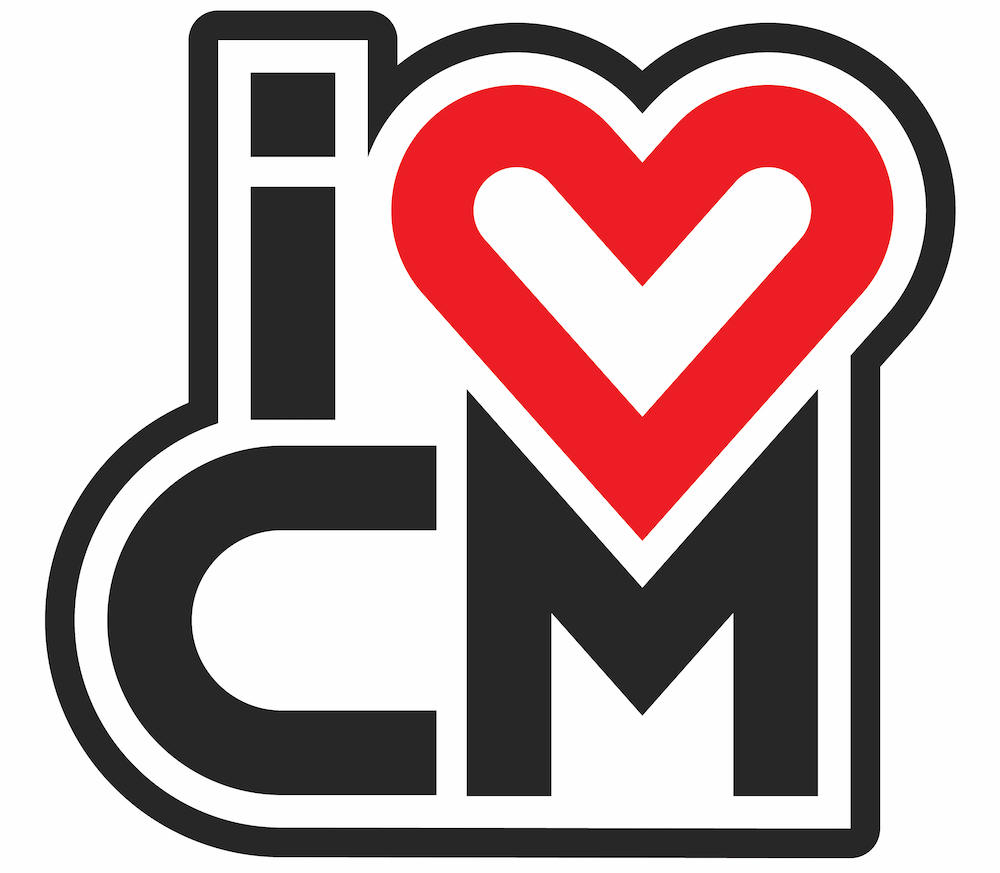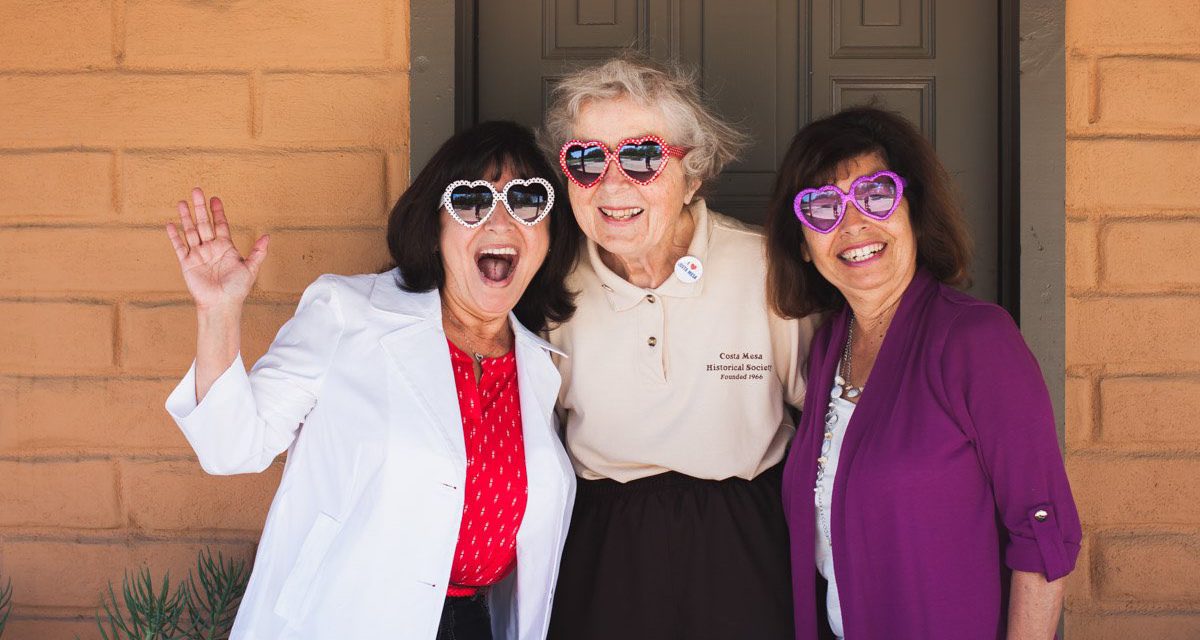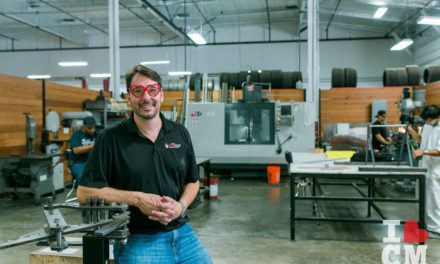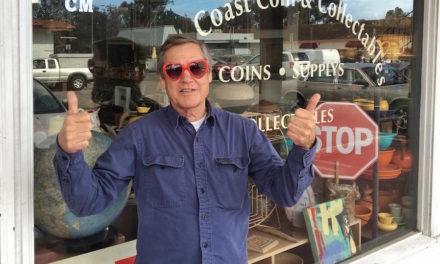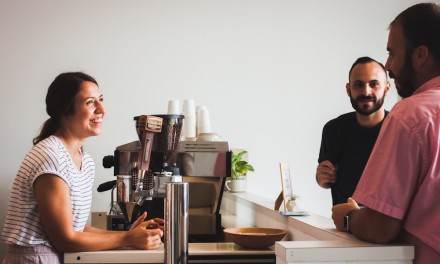Note: This is Part 2 in a two-part series on local, Costa Mesa history. You can read Part 1 all about the Costa Mesa Historical Society here.
Modern-day Costa Mesa is known for things like its award-winning restaurants, crazy-talented artists, passionate do-gooders, mid-century institutions and lovely, kissed-by-ocean-air neighborhoods.
But this land we now call Costa Mesa has lived many former lives. In the wayback days before streets and settlements, entirely different societies and cultures made their home on the mesa.
The earliest recorded example is the Tongva tribal village of Lukup, whose rounded huts – called ki – were believed to have covered what is now the Fairview Park bluffs and surrounding areas.
More recently, in the ranchos days of the early 1800s, that same part of Costa Mesa became an estancia (“ranch estate”) and the land was used for grazing cattle. It was likely during this period in history, around 1820 or so, that the building now known as The Diego Sepúlveda Adobe was built.
Rooted In History: The Diego Sepúlveda Adobe At Estancia Park In Costa Mesa
Photographer: Brandy Young



“The adobe was basically the reason for launching the Society itself,” said Tess Bernstein, one of the Directors at the Costa Mesa Historical Society. “We believe it was built by the padres and used during the mission period as a way-station to house missionaries and herders traveling between Mission San Juan Capistrano to the south, and Mission San Gabriel to the north.
“So people would stop to rest, wait out bad weather – and the cattle would just roam the land. Back then, cattle was raised mostly for their hides, for the leather. It wasn’t until the miners came through later that people thought to use the cows for actual meat.
“In Costa Mesa, we actually had three adobes. The first two – the Rice Adobe and the Polloreno Adobe – were destroyed because of weather exposure and treasure hunters looking for Spanish gold. Our last standing adobe is sometimes referred to as the Estancia Adobe – because it was the estancia of that land in the mission days – or the Diego Sepúlveda Adobe, named after the Don who owned it in the 1860s.
“The only reason we still have the remaining adobe to enjoy today is because Gabriel Allen, the man who next acquired the property, opted to build a larger, ranch-style house around the existing adobe instead of tearing it down. That basically hid it away and unintentionally protected it for a long, long time.”

Tess Bernstein and the Costa Mesa Historical Society Protect the Adobe and Educate the Public
Photographer: Brandy Young

Eventually, around 1940, the ranch house (still hiding the adobe) – along with the surrounding land – was purchased by the famous, local farmers-turned-philanthropists, the Segerstrom family. The Segerstroms placed care of the property in the trusted hands of ranch foreman, Hill Alcala, and his wife, Frances.
We were lucky enough to catch up with two of Hill and Frances’ children, sisters Lynn Alcala and Vicki Alcala-Kelley, and knowledgeable adobe docent, Kathy Bequette. Lynn and Vicki grew up living on the ranch from 1943 – 1963, and they have so many wonderful memories from those days.
“Our childhood on the ranch was simple, yet far richer than we ever realized at the time,” the sisters shared with us in a thoughtfully-written recount of their childhood home. “Much of that time seemed isolated from neighbors and friends, but that was before land owners were selling to developers. We had all three rolling hills to wander on and a creek below the mesa that we frequented on weekends or in the summer time, once our house chores were done.
“There were many playful summers playing ‘Cowboys and Indians’ and ‘Huck Finn and Tom Sawyer’ down at the creek, making rafts and catching crayfish that Mom would cook up for us. We would make-believe we were the ‘Little Rascals’ with our tag-along dog, Sacarias, to keep us company (until he eyed a jackrabbit run across the field.)
“And oh, but Mothers’ flower gardens! The most beautiful we’ve ever seen. That must be where we got our own green thumbs. She had every color of hollyhock, and the tallest, too. Her lillies, gladiolas, geraniums, roses and sweet peas would draw beautiful song birds.”


Sisterly History: Vicki Alcala-Kelley and Lynn Alcala lived in the adobe as children
Photographer: Brandy Young
Lynn and Vicki’s late mother, Frances Alvarez Alcala, would have made a stellar archaeologist. By all accounts she had the curious and organized mind of a scientist.
“As early as 1943, Mom began her collection of Indian artifacts unearthed on the mesa,” remember her daughters, fondly. “Whether hanging out laundry or tending her beautiful flower gardens, mom was rewarded with a vast assortment of treasured finds.
“Often, after the farm hands had tilled the mesa with the large tractor-pulled plows, she would walk the land in search of artifacts – and never came home empty-handed. Mom had a keen sense, sharp eyes and was methodical in the pattern with which she covered the land.
“Mom usually used her quiet time (when we were in school) to catalog and sketch her recent finds in a large scrapbook. She would date and describe the location of her finds as well. Some of the artifacts consisted of: large pestles, mano, arrowheads, sinkers, various sized beads, cogwheels, large and small stone bowls and a variety of seashells.
“She sold many of the artifacts to the Segerstrom family who in turn loaned many pieces to the Bowers Museum. Those funds helped supplement our family income – with a portion used to purchase fabric with which Mom would make our school clothes.”
Treasure Trove: Vicki Alcala-Kelley Shares Her Mother’s Meticulous, Hand-Drawn Artifact Journal
Photographer: Brandy Young

Map It: Vicki Alcala-Kelley’s Hand-Drawn Schematic Of The Segerstrom’s 19-Room Estancia Ranch
Photographer: Brandy Young

So life went on like that for the Alcala family, in the rambling ranch house on the mesa, until the fateful night the adobe made its dramatic reemergence.
“Our entire family was home that dreaded evening, with the exception of our older brother Tony who was at a wedding,” recalled Lynn and Vicki. “We had all settled in the living room to watch TV and keep warm by the fireplace, the main source of heat in the house. Our father detected the smell of smoke not coming from the fireplace and asked Mom to check the kitchen, to see if we girls had left something burning on the stove.
“Mom pushed open the pantry door to enter the kitchen and was thrust backward by a wall of heat, smoke and flames. The kitchen was engulfed, along with two pantries and our parents’ bedroom.
“We did not have a telephone, so Dad drove to the nearest gas station – the Mobile at Adams and Harbor Boulevard – and called the fire department; then, he hurried back home.
“Unfortunately, it had been raining for days, which made matters all the worse for our winding, unpaved driveway. Two of the three fire trucks became stuck in the mud. Dad rushed to the large barn and pulled out a Caterpillar, hooked it onto the fire vehicles and pulled them free. It was quite a challenge for the fire crews, considering the circumstances.”
Frances and Hill Alcala knew of the adobe structure hidden within the home and asked the fire fighters to make every effort to save it. Unfortunately, very little could be done to save the wooden structure of the large, ranch house – most of which was destroyed in the fire. It was later determined to have been an electrical fire ignited by frayed knob-and-tube wiring.
“The Segerstroms saw to it that crews went immediately to work to make the adobe portion of the house livable. The Segerstrom family had another home available for us, but Dad preferred to stay at the estancia until we completed the school year. In the Summer of ’62 we moved to the farm house on Greenville Street, just around the corner from the Segerstrom Ranch on Fairview Road.”
Docent Kathy Bequette Is The One To See If You Want Info On The Adobe
Photographer: Brandy Young


“The fire department was very careful to remove the damaged wood structure but keep as much of the adobe intact as possible,” said docent Kathy Bequette. “In 1963, the adobe and surrounding land was given to the city to be protected because if its historical significance. Then, in 1966, the Costa Mesa Historical Society was formed to restore the adobe and turn it into a place of history and learning for all visitors.”
Bequette is full of knowledge and insight. If you happen to visit the estancia on a day when she is giving the tour, first consider yourself lucky, and then, bring on your questions.
“We are open for tours of the adobe on the first and third Saturday of the month from noon to 4 pm,” shared Bequette. “Each room represents a different, significant time period for this area of early California. One room represents how things might have been in rancho days when the adobe offered respite for traveling missionaries. Another room shows what you might have seen in the era of the Dons, when Diego Sepúlveda owned it. And then, finally, we have a Victorian display as things might have been when Gabe Allen built the larger home around the existing adobe.”
This precious piece of Costa Mesa history is among the oldest standing structures in Orange County, second only to Serra’s Chapel at Mission San Juan Capistrano.

Tours of the adobe are free, but consider donating to the Society while you’re there. Every little bit helps local preservationists in their efforts.
“It used to seem strange to see people come and take tours of what was essentially my childhood home,” said Lynn Alcala of the adobe. “When I was younger, I admit it bothered me a bit. But now that I am older, I think it’s wonderful that this special place has been protected.
“How blessed we were the Segerstrom family employed our father as their ranch foreman, and to have been given the opportunity, honor and privilege to have been caretakers of the estancia. Growing up here, from childhood through high school, our lives were filled with countless, beautiful memories and blessings.
“The adobe is an integral part of early California – and City of Costa Mesa – history. We must continue to recognize its significance and preserve it for our future generations.” ♥
